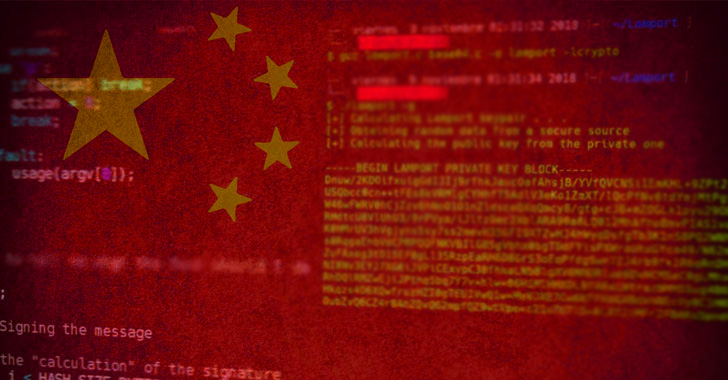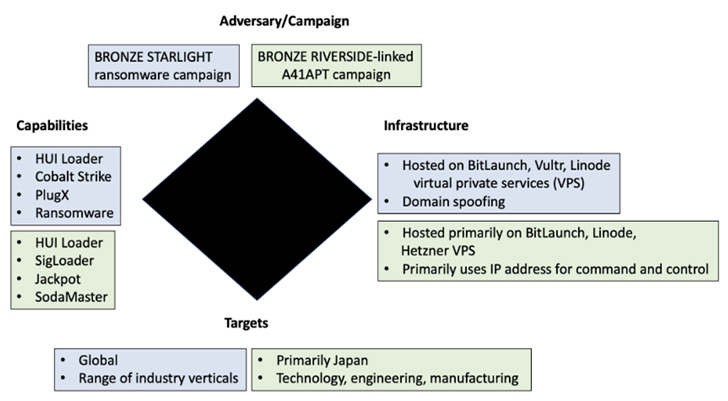
A China-based advanced persistent threat (APT) group is possibly deploying short-lived ransomware families as a decoy to cover up the true operational and tactical objectives behind its campaigns.
The activity cluster, attributed to a hacking group dubbed Bronze Starlight by Secureworks, involves the deployment of post-intrusion ransomware such as LockFile, Atom Silo, Rook, Night Sky, Pandora, and LockBit 2.0.
“The ransomware could distract incident responders from identifying the threat actors’ true intent and reduce the likelihood of attributing the malicious activity to a government-sponsored Chinese threat group,” the researchers said in a new report. “In each case, the ransomware targets a small number of victims over a relatively brief period of time before it ceases operations, apparently permanently.”
Bronze Starlight, active since mid-2021, is also tracked by Microsoft under the emerging threat cluster moniker DEV-0401, with the tech giant emphasizing its involvement in all stages of the ransomware attack cycle right from initial access to the payload deployment.
Unlike other RaaS groups that purchase access from initial access brokers (IABs) to enter a network, attacks mounted by the actor are characterized by the use of unpatched vulnerabilities affecting Exchange Server, Zoho ManageEngine ADSelfService Plus, Atlassian Confluence (including the newly disclosed flaw), and Apache Log4j.
In less than a year, the group is said to have cycled through as many as six different ransomware strains such as LockFile (August 2021), Atom Silo (October), Rook (November), Night Sky (December), Pandora (February 2022), and most recently LockBit 2.0 (April).
What’s more, similarities have been uncovered between LockFile and Atom Silo as well as between Rook, Night Sky, and Pandora — the latter three derived from Babuk ransomware, whose source code leaked in September 2021 — indicating the work of a common actor.

“Because DEV-0401 maintains and frequently rebrands their own ransomware payloads, they can appear as different groups in payload-driven reporting and evade detections and actions against them,” Microsoft noted last month.
Upon gaining a foothold inside a network, Bronze Starlight is known to rely on techniques like using Cobalt Strike and Windows Management Instrumentation (WMI) for lateral movement, although starting this month, the group has begun replacing Cobalt Strike with the Sliver framework in their attacks.

Other observed tradecraft relates to the use of HUI Loader to launch next-stage encrypted payloads such as PlugX and Cobalt Strike Beacons, the latter of which is employed to deliver the ransomware, but not before obtaining privileged Domain Administrator credentials.
“The use of HUI Loader to load Cobalt Strike Beacon, the Cobalt Strike Beacon configuration information, the C2 infrastructure, and the code overlap suggest that the same threat group is associated with these five ransomware families,” the researchers explained.
It’s worth pointing out that both HUI Loader and PlugX, alongside ShadowPad, are malware historically put to use by Chinese nation-state adversarial collectives, lending credence to the possibility that Bronze Starlight is more geared towards espionage than immediate monetary benefits.

On top of that, the victimology pattern spanning across the different ransomware strains shows that a majority of the targets are likely to be of more interest to Chinese government-sponsored groups focused on long-term intelligence gathering.
The key victims encompass pharmaceutical companies in Brazil and the U.S., a U.S.-based media organization with offices in China and Hong Kong, electronic component designers and manufacturers in Lithuania and Japan, a law firm in the U.S., and an aerospace and defense division of an Indian conglomerate.
To that end, the ransomware operations, besides providing a means to exfiltrate data as part of the double extortion “name-and-shame” scheme, also offer twin advantages in that it allows the threat actor to destroy forensic evidence of their malicious activities and act as a distraction from data theft.
“It is plausible that Bronze Starlight deploys ransomware as a smokescreen rather than for financial gain, with the underlying motivation of stealing intellectual property or conducting espionage,” the researchers said.













